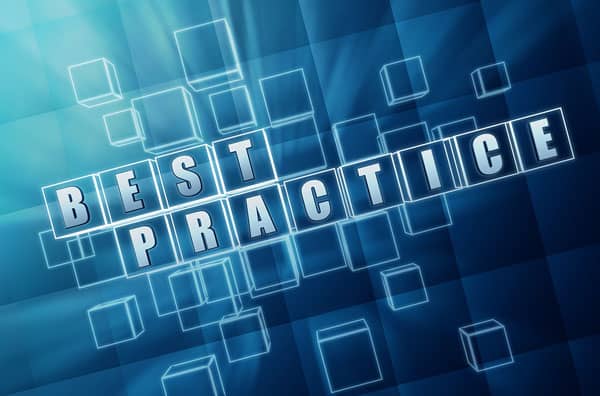In our second part of this series, we discuss the best practices in visual content management.
In a world where the volume of visual content is increasing exponentially to feed diverse distribution channels, organizations need an effective means of localizing and managing their resources to support the delivery of more immersive and engaging customer social media experiences.
The old ways of managing visual content across shared hard drives and using emails are far out of step with the speed at which today’s business environment moves. Cloud storage is not up to the job either. What is simply a virtual hard drive is notorious for its inefficient filing and recovery system.
Tips for Visual Content Management Success
A Visual Content Management system is a software solution to store, track and leverage such rich media content as videos, photos, infographics, and graphics. There are many benefits associated with Visual Content Management such as a central location to store visual assets, a reduction in organizational costs, dynamic distribution of assets to teams and a way of maintaining consistent branding.

To realize these objectives presents organizations with a challenge: how to create, store and move visual content in the most cost-effective and productive way. All too often, companies neglect the proper organization of people and processes involved with their VCM solutions.
But an end to end social visual content platform that takes care of every aspect of your social operation, such as storing, workflow and eventually publishing to multiple channels, save time, money and resources. This enables greater reach and better customer interactions as you will be firmly in the driving seat of your social media marketing campaigns.
This article provides a number of best practices to help ensure VCM success.
Identify VCM Stakeholders
Implementing successful VCM solutions starts with identifying those people within and outside your company who will have access to VCM.

Governance
Depending on the size of your organization, you may want to give overall responsibility for VCM to one person or a governance team. They would be responsible for maintaining the system and content, deciding which features to adopt, defining categories and metadata properties and training users.
Training is imperative. Not only in how to use the system, but also on vital topics such as digital rights restrictions. Do your employees know the exact meaning of the restrictions surrounding rights-restricted assets? Keeping them up-to-date will avoid you getting sued further down the line if someone violates the rights of a restricted photo.

Put Your Current Processes under the Microscope
Before implementing VCM solutions, analyze your current way of doing things. This will help you to understand exactly how visual content management can improve your processes.
For example, you may discover that it takes you five days to format and edit photos taken at an event before they are ready for other people in your organization to use. This is where a VCM system can help you by performing these tasks in much shorter timeframes. Questions to ask yourself during this stage include:
- Where is our visual content created and stored?
- How many content marketing platforms do we use?
- Are the teams working on them talking to each other?
- Where are our current bottlenecks?
- Do we know where and how all our visual content is being used?
Once you have a solid understanding of how your current systems work, or don’t work as the case may be, you can then start to think about implementing an efficient workflow. In other words, how you will store, manage and deploy visual content, bearing in mind that sometimes you will have multiple projects being worked on by several teams.
Creating a VCM Workflow
Obtaining visual content
Most VCM workflows start with asset acquisition from sources such as UGC, stock libraries, original content, creative agencies, trade partners and publications.
 Cataloging assets
Cataloging assets
Create a universal cataloging system to easily store and retrieve assets. This is crucial for successful visual content management. Assets need to be cataloged in a predictable manner that reflects your industry and organization. This advice is intuitive and rather obvious, yet many purchasers VCM solutions ignore the advice and create labels on the fly.
Assets rarely fit into one category, so it may be necessary for multiple categorizations to produce the most effective results. Examples of categories that your files can slot into are:
Catalogs according to subject – i.e. Health and Safety, Travel, Clothing.
Catalogs according to your work processes – R&D, Product line.
Naming files
Create a specific and simple naming convention for your files and stick to it. If possible, keep the file names short.
 Applying metadata
Applying metadata
Metadata is the embedded description for every asset. It is extremely important as it allows for the categorization and organization of assets, making them easier to find. Consider this: you are time-pressed and urgently need images for a Facebook post.
Would you rather flip through millions of photos held in your VCM system or search through a much smaller selection that have been returned from a search using metadata? Companies need to develop a controlled vocabulary to describe assets. If users are permitted to freely tag assets, similar photos, videos, and other content may be described in an endless variety of ways.
Conduct regular audits
This will ensure content quality and consistent practices across the VCM platform and among users.
Getting it Right
It is almost impossible to achieve social media marketing goals if visual content cannot be controlled, tracked and repurposed effectively. This is perhaps summed up best by the report Best Practices in Digital Asset Management, Forrester Research, Inc., 2013, when it said: “What good is a DAM solution if it isn’t used properly—or at all?”

To see the first article on Why Your Social Media Activity Needs A Visual Content Management System, click here.


 Cataloging assets
Cataloging assets Applying metadata
Applying metadata